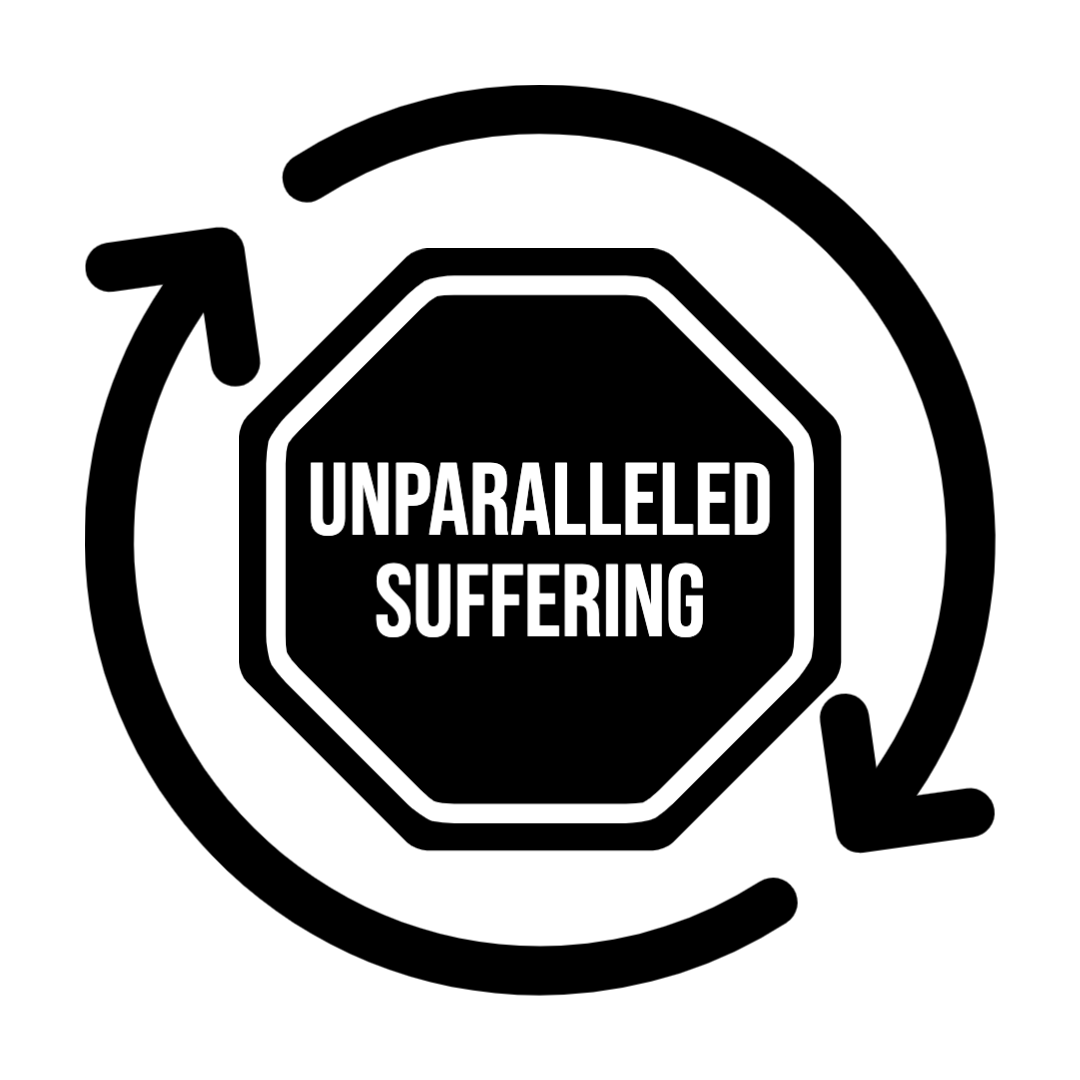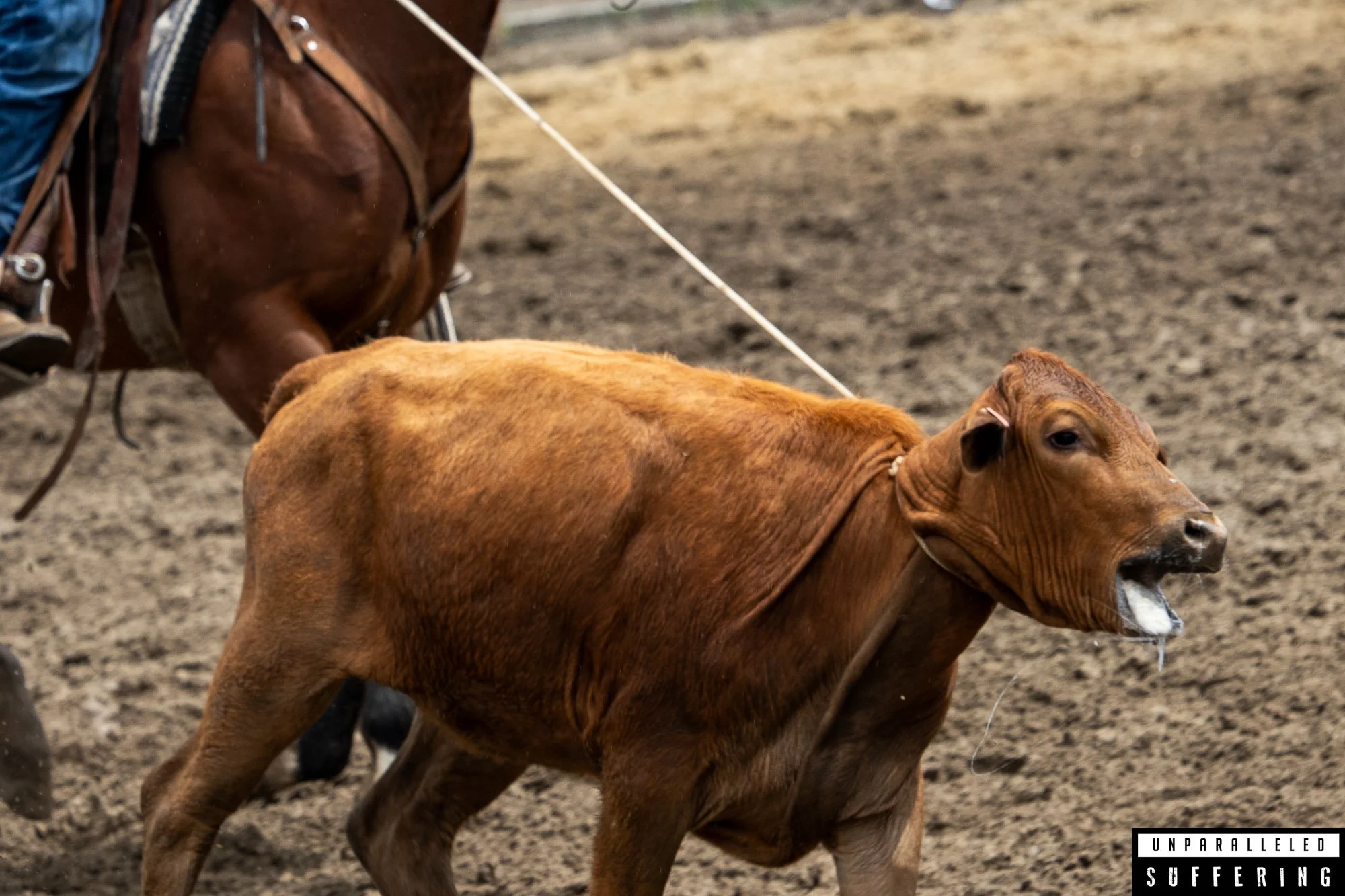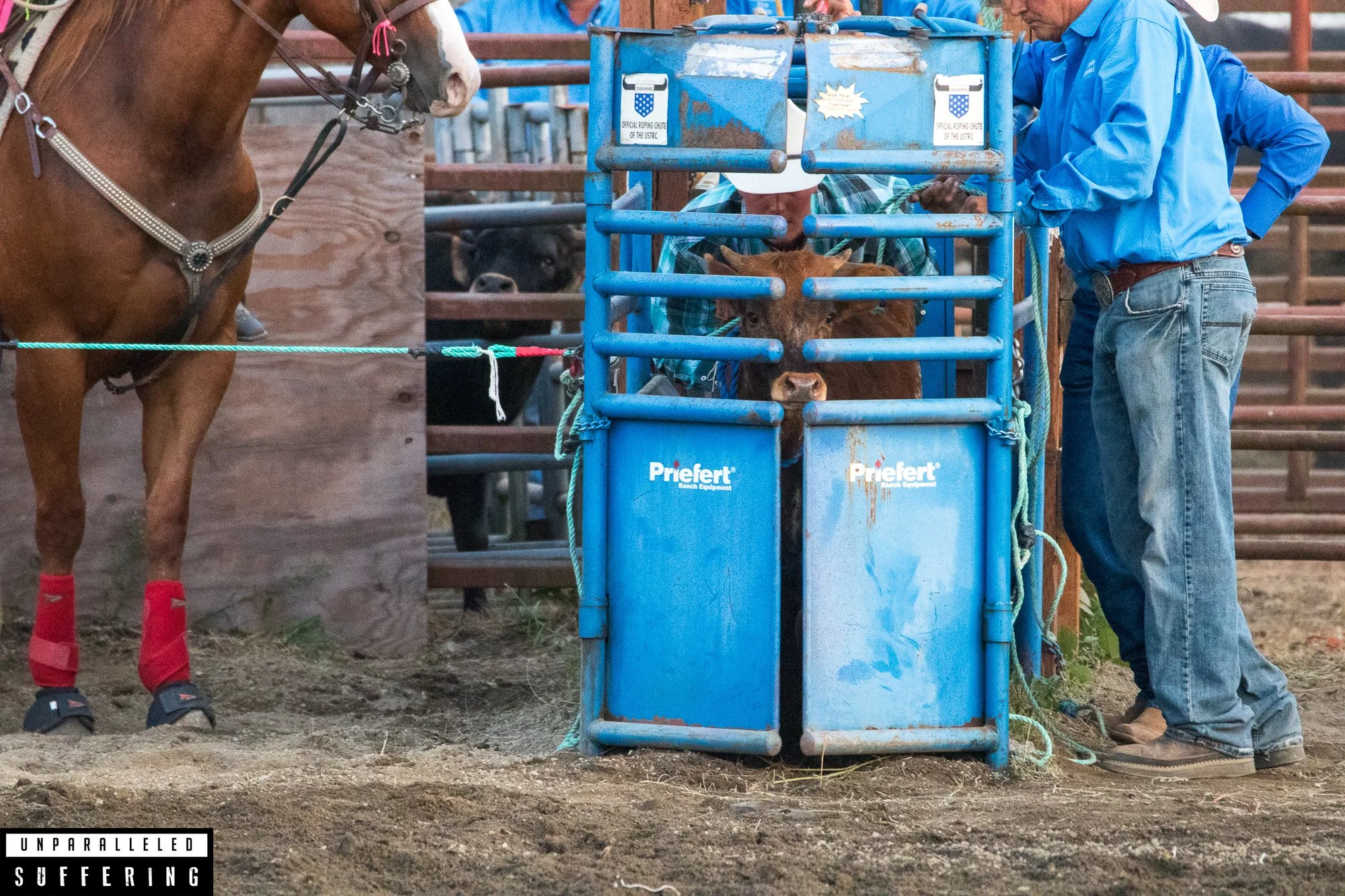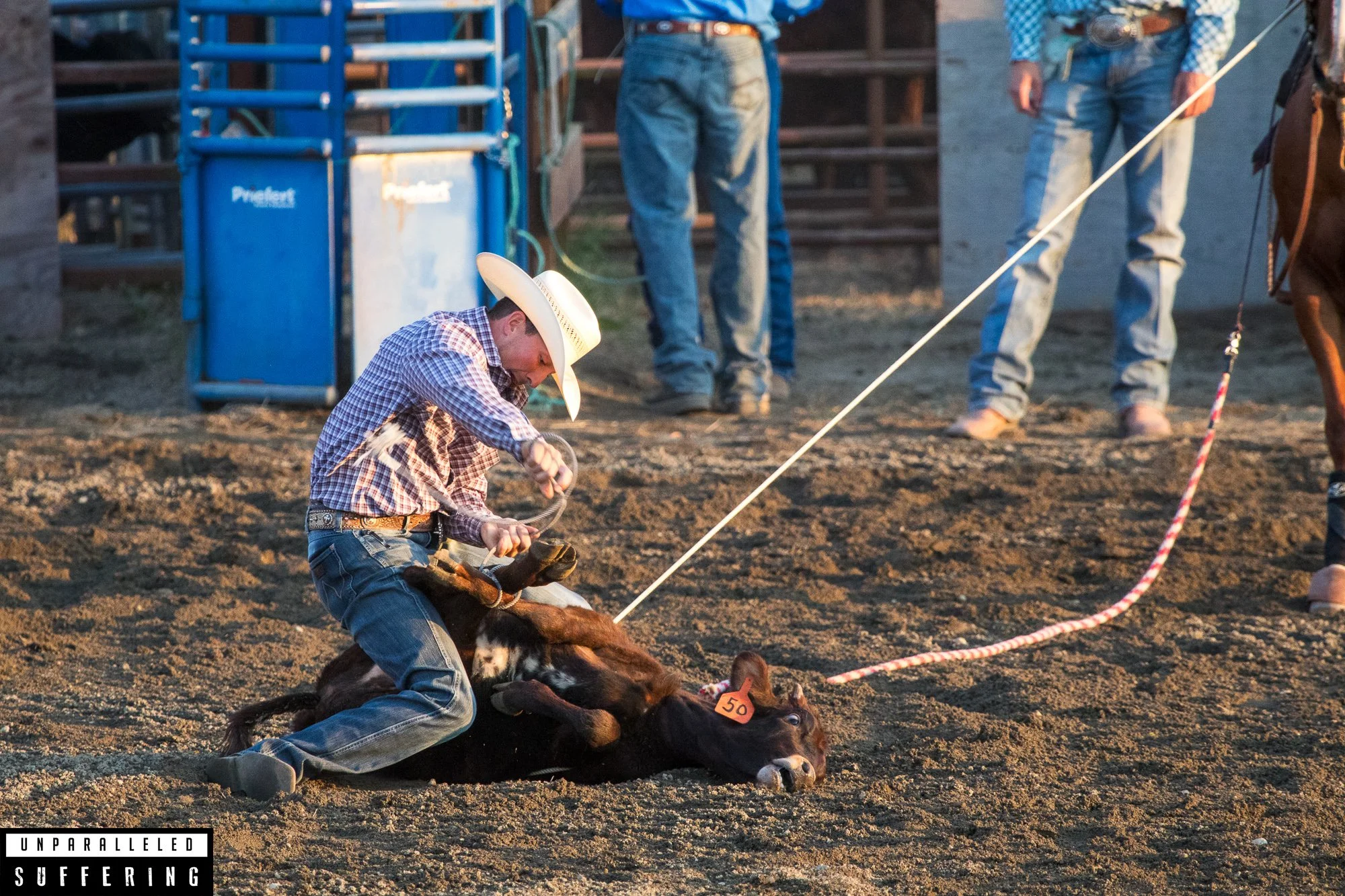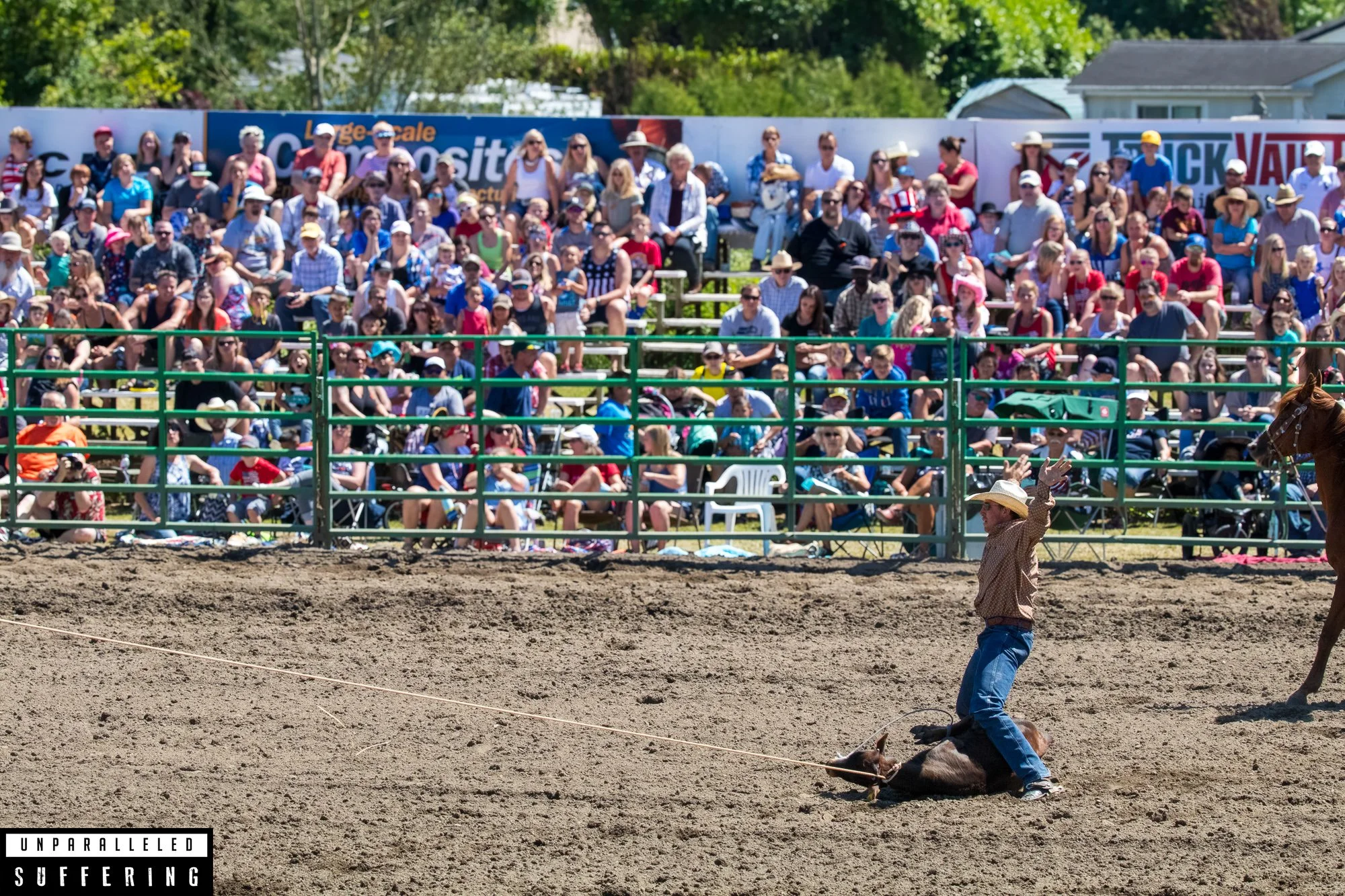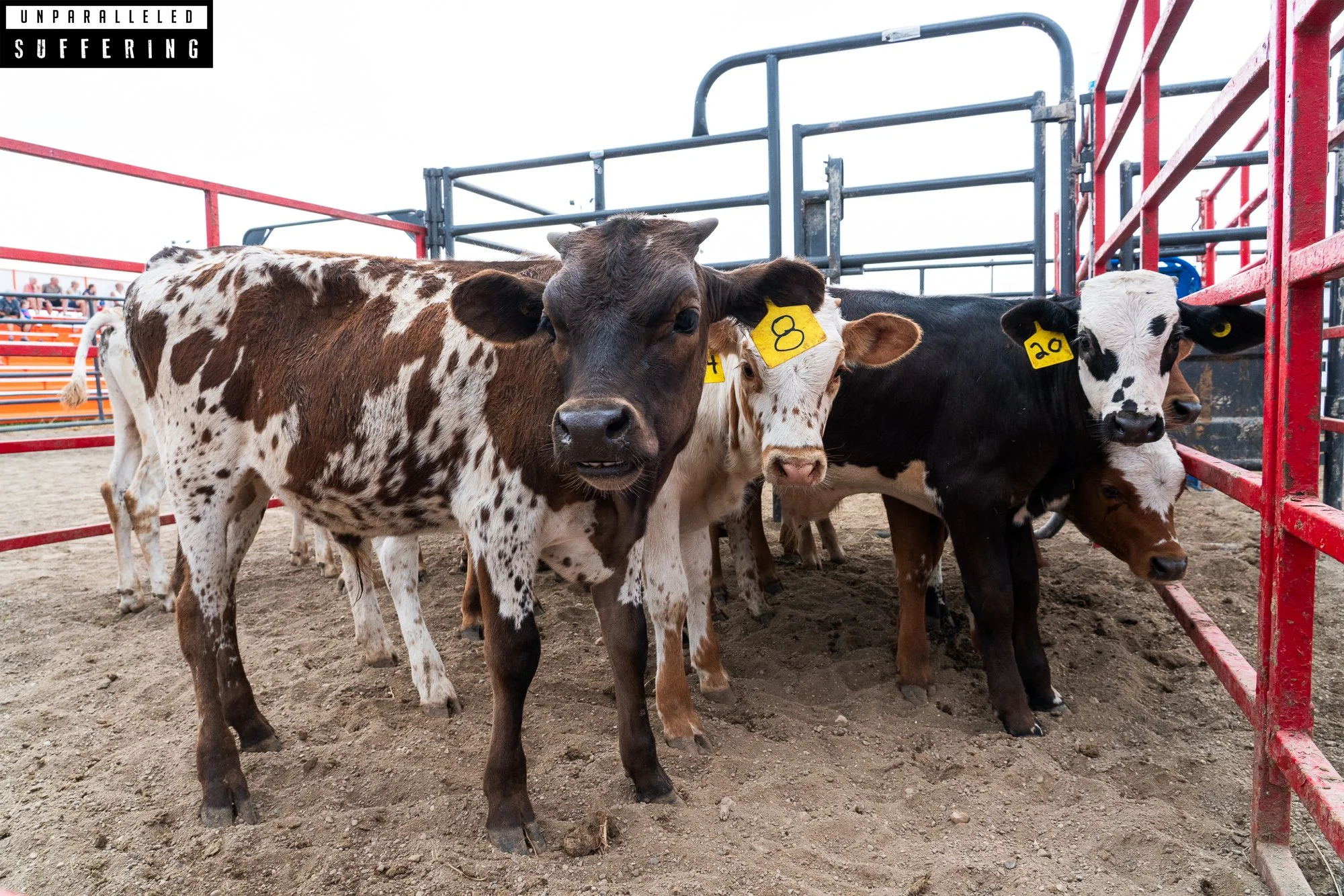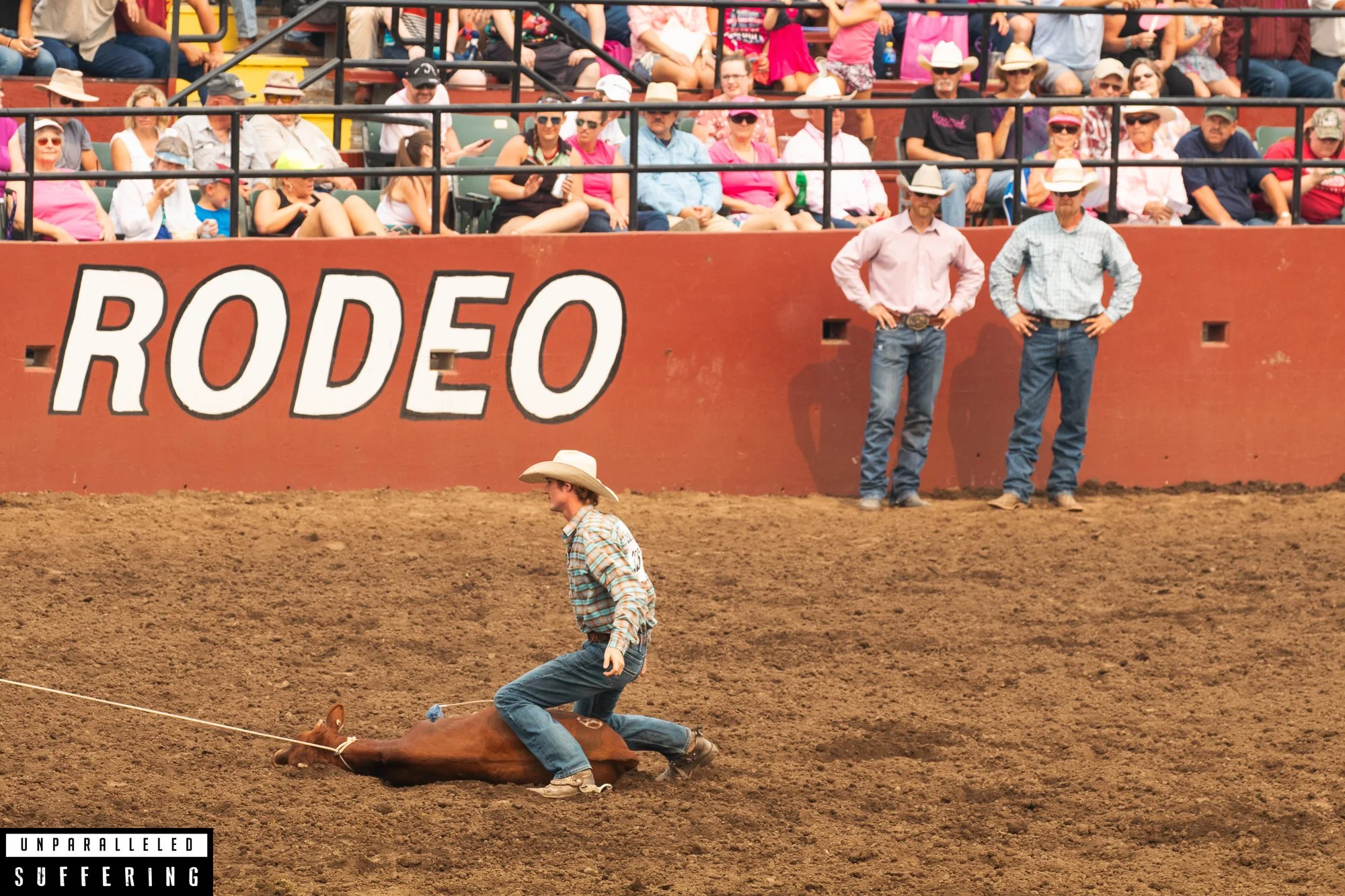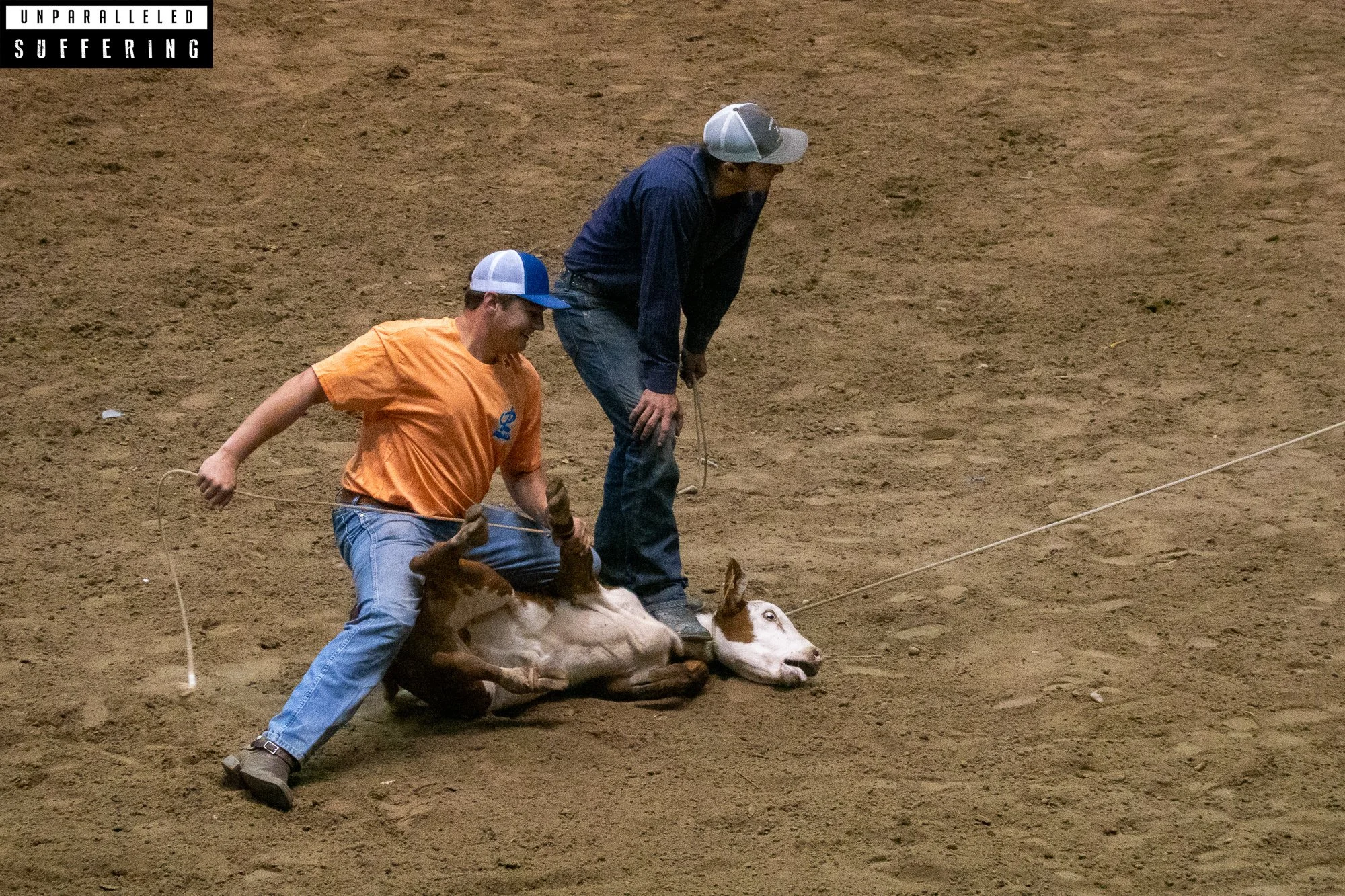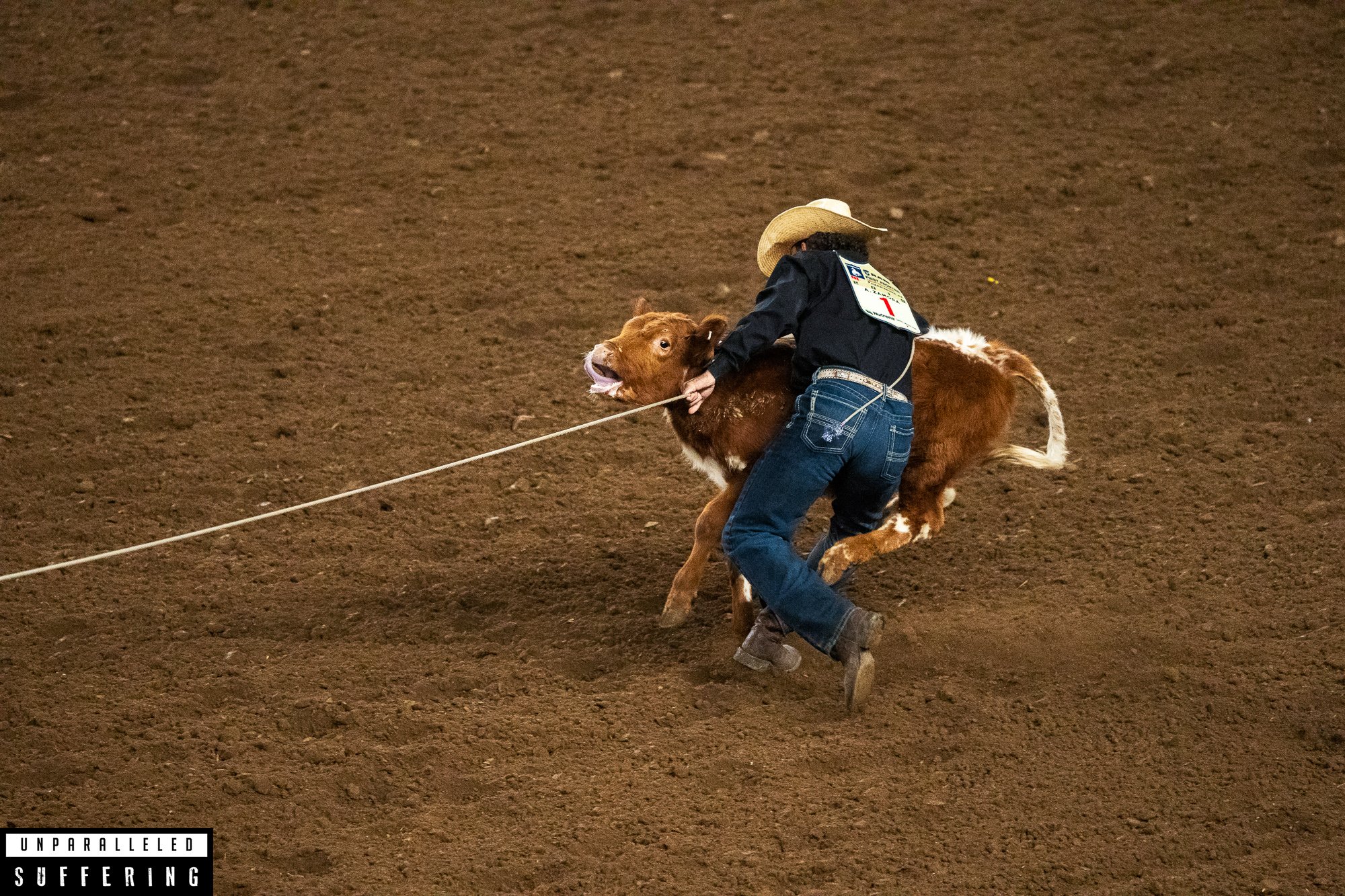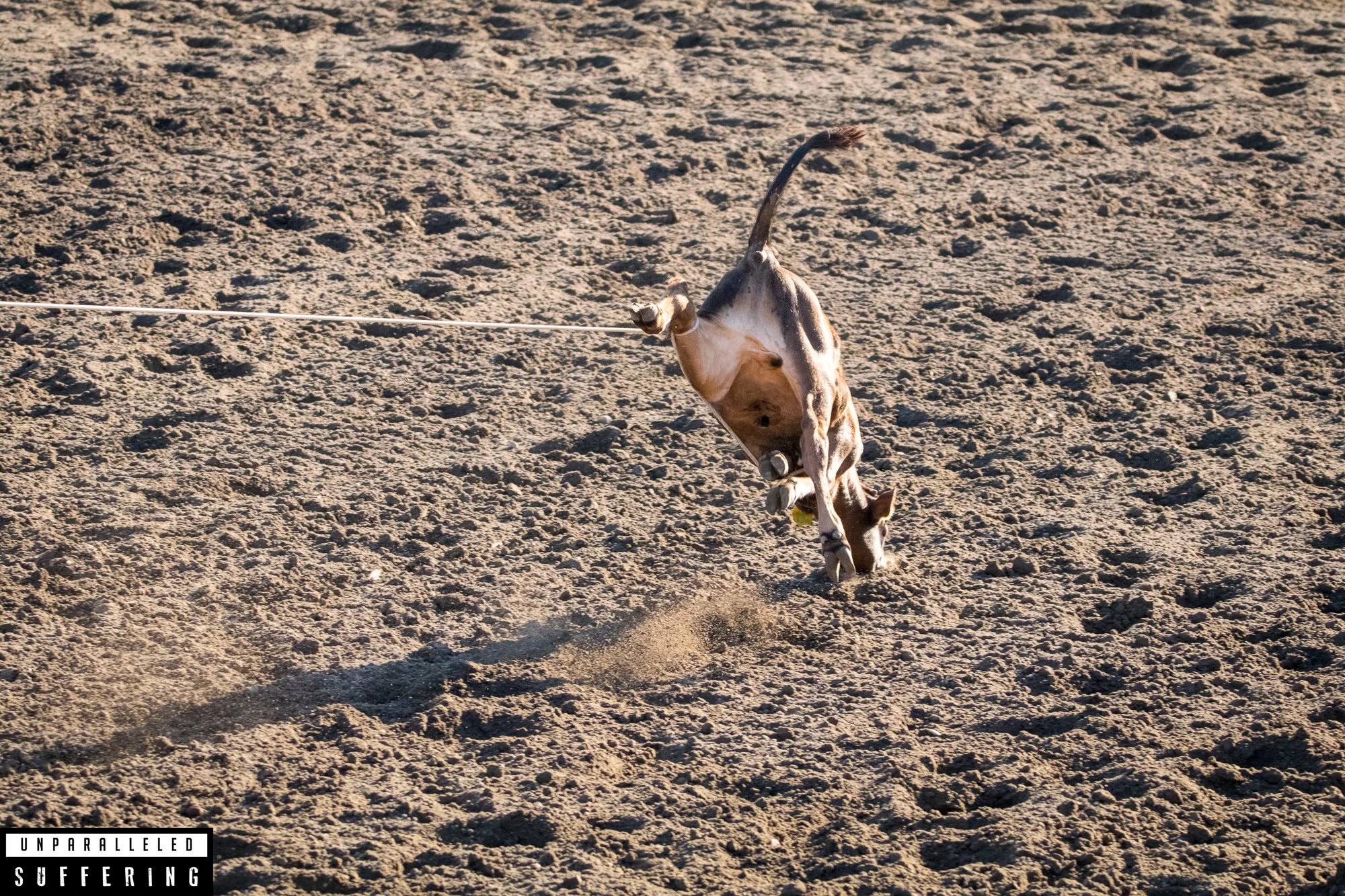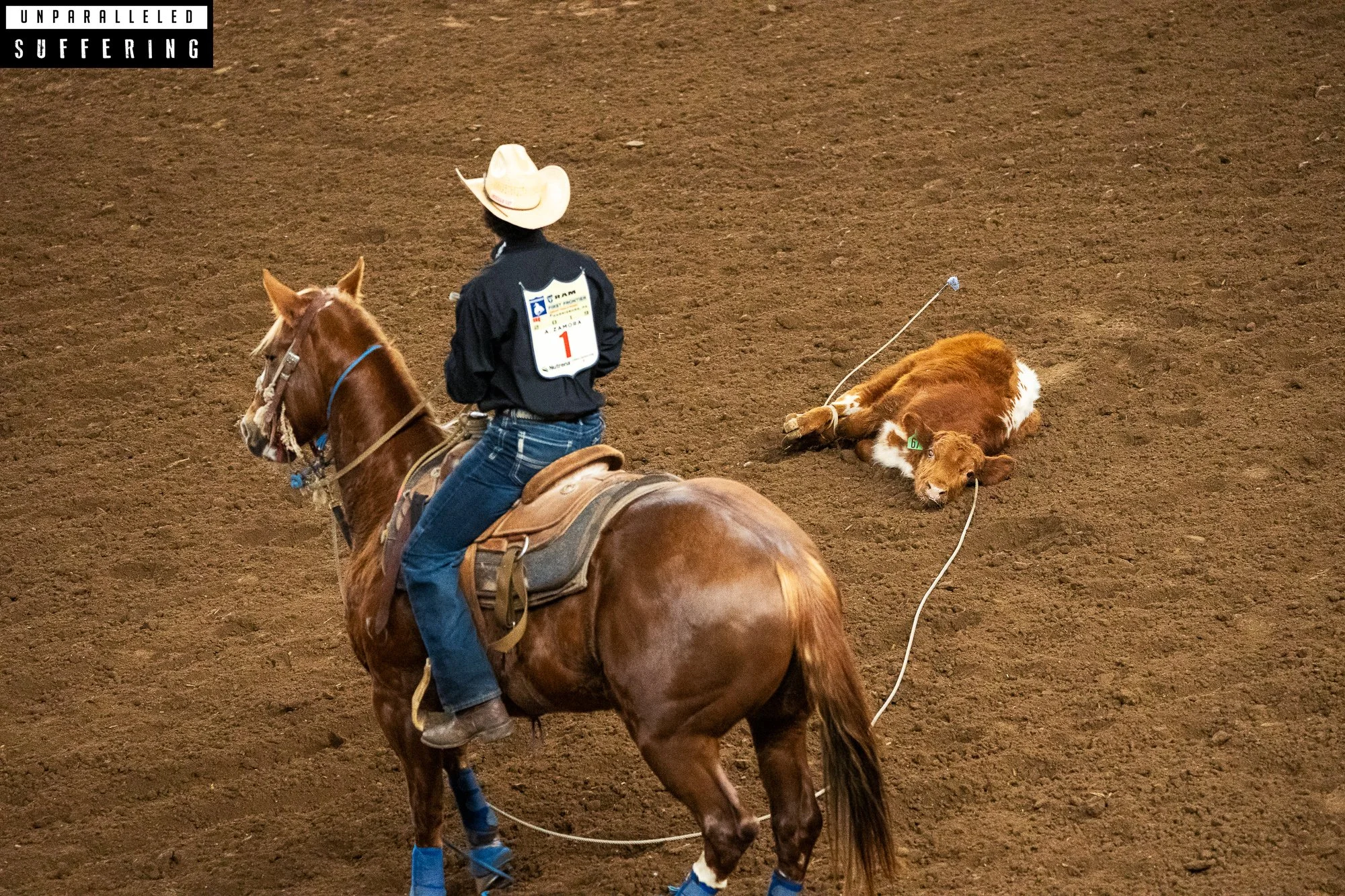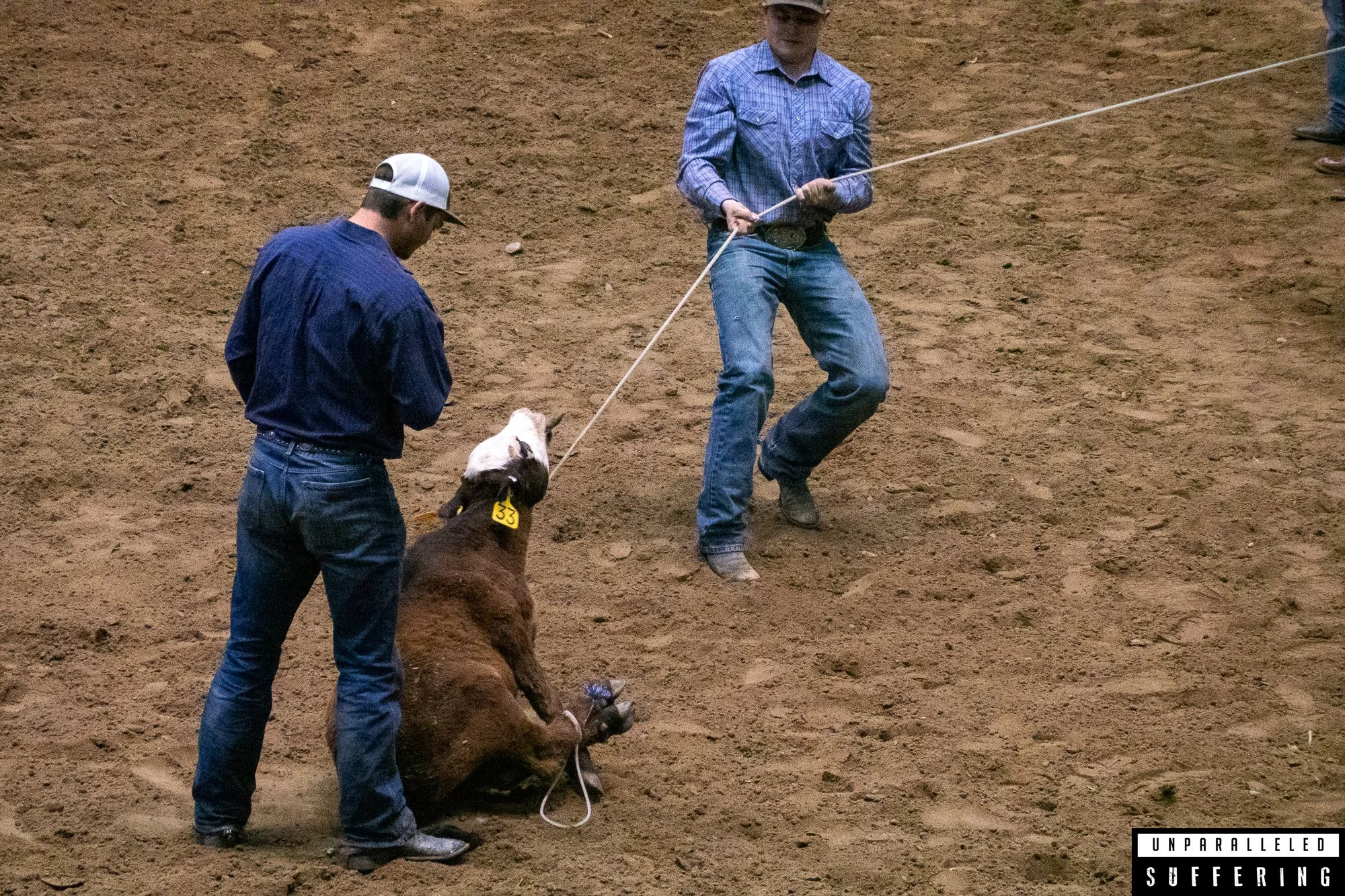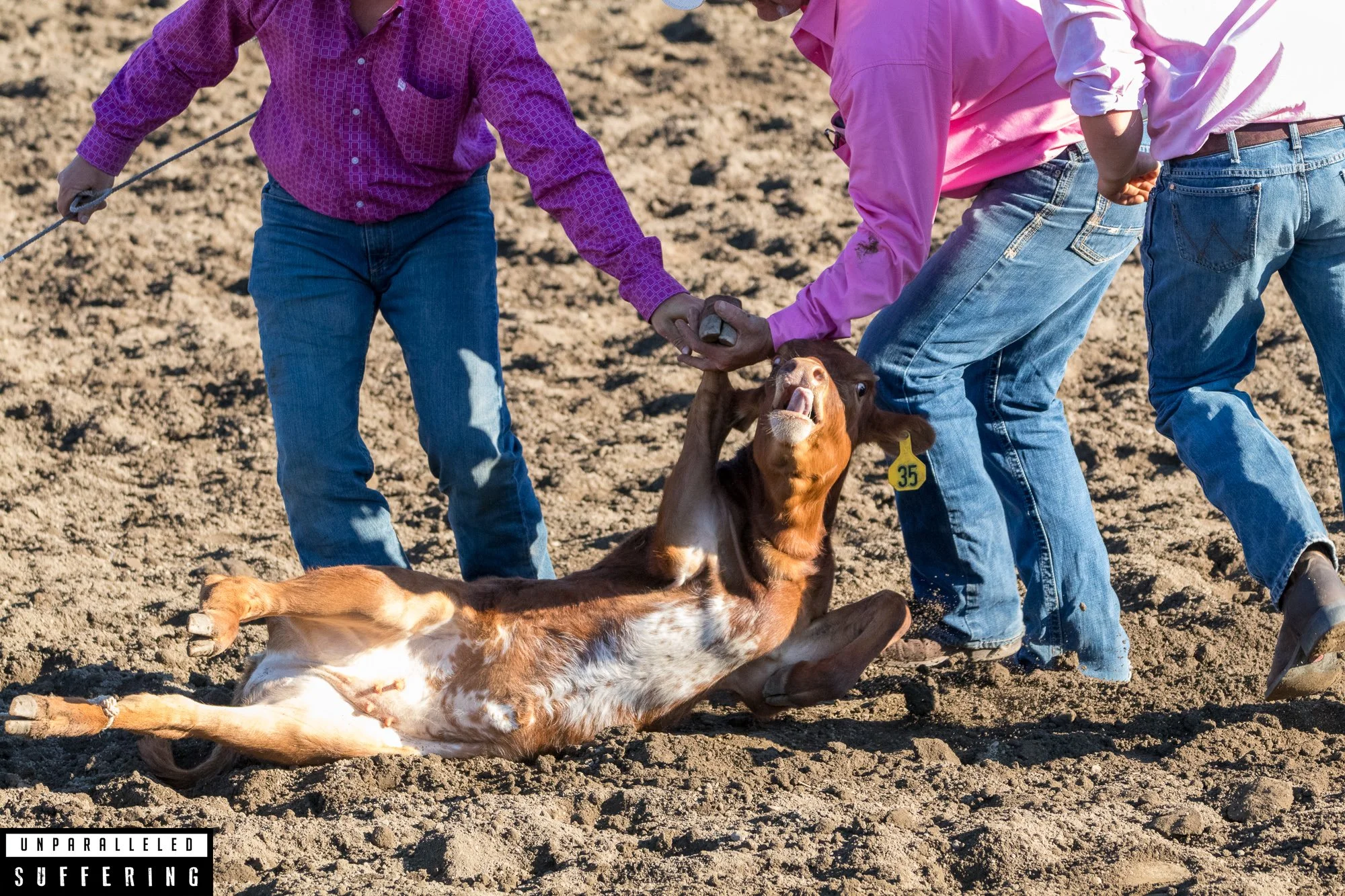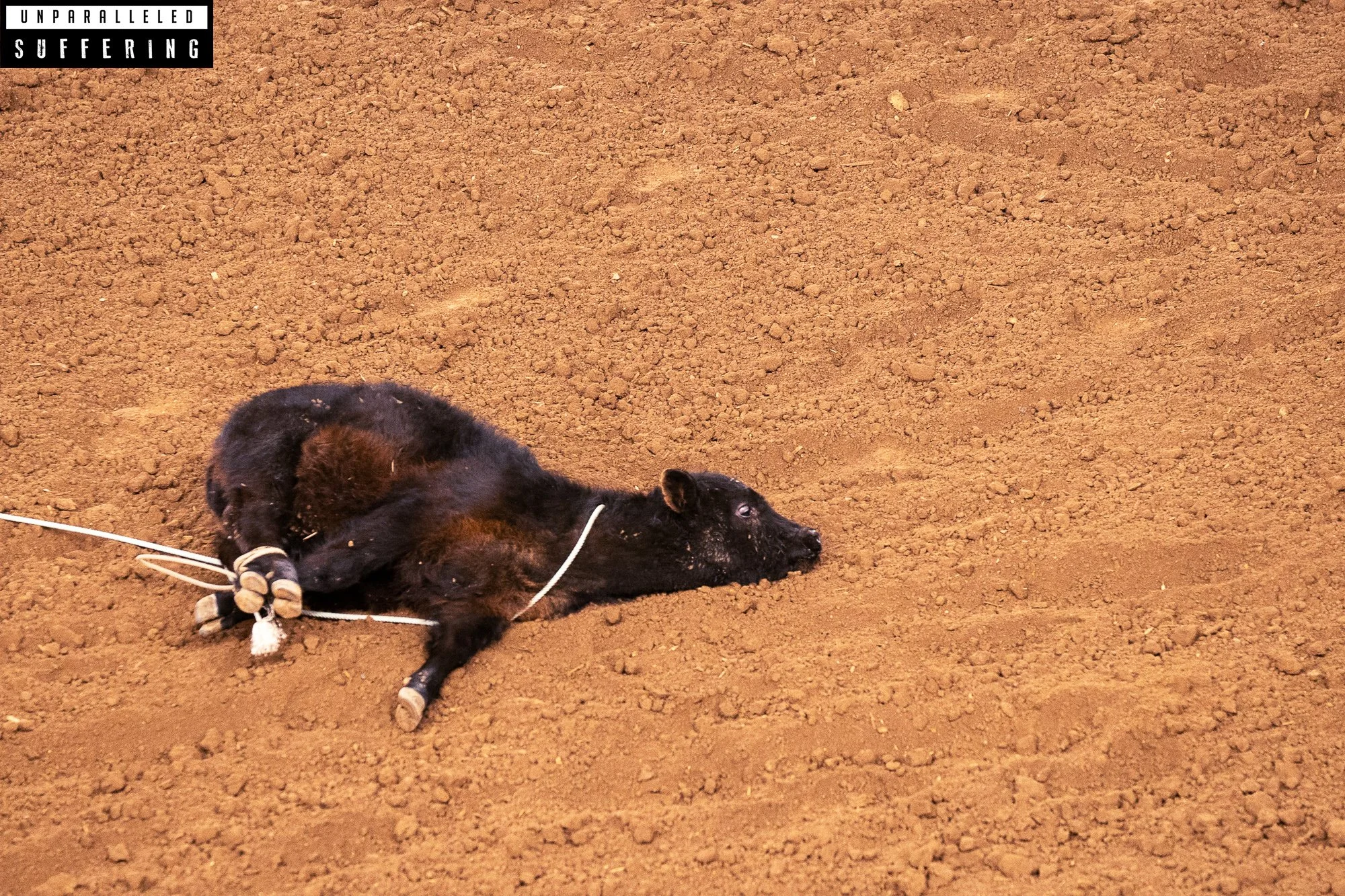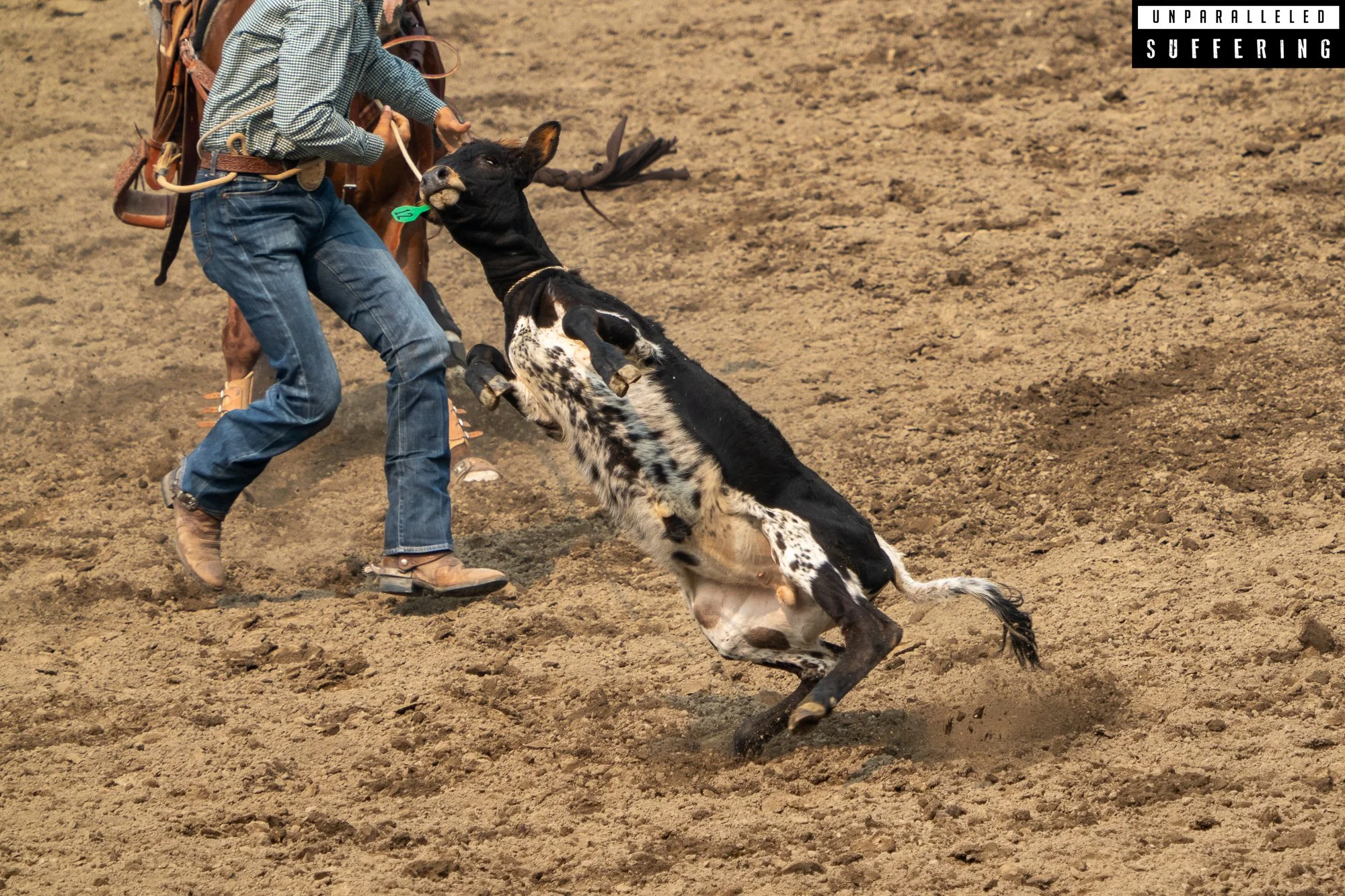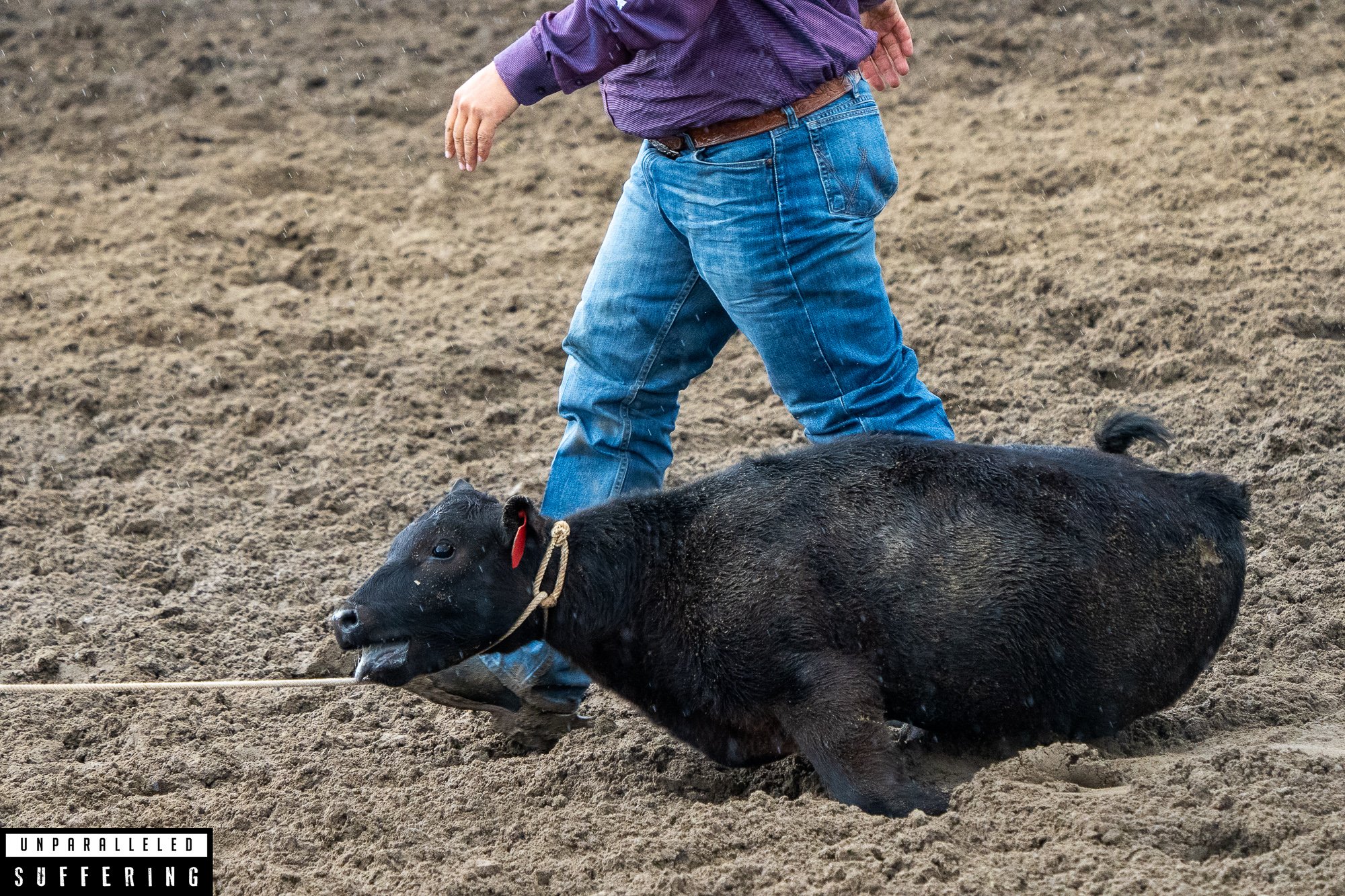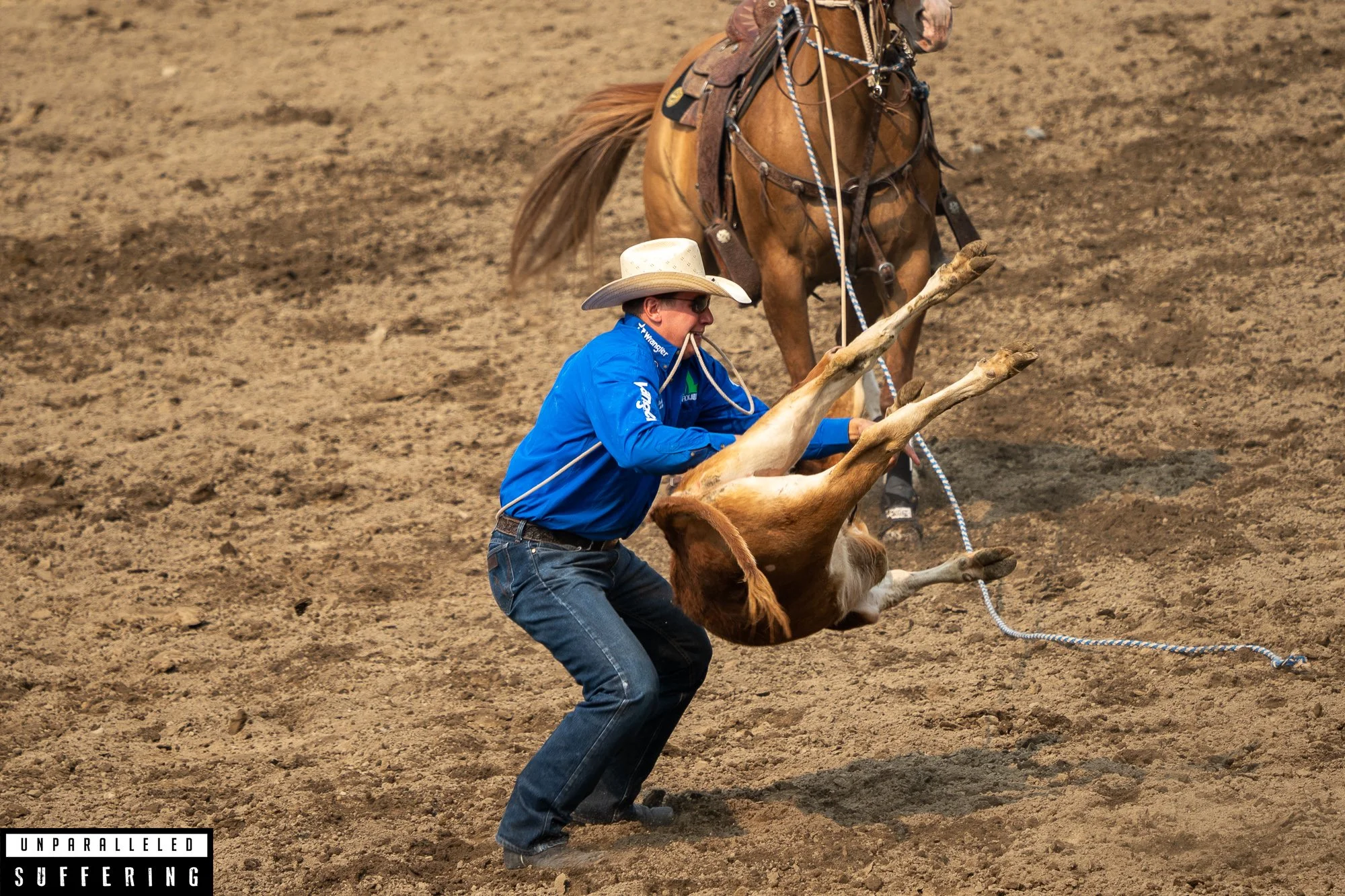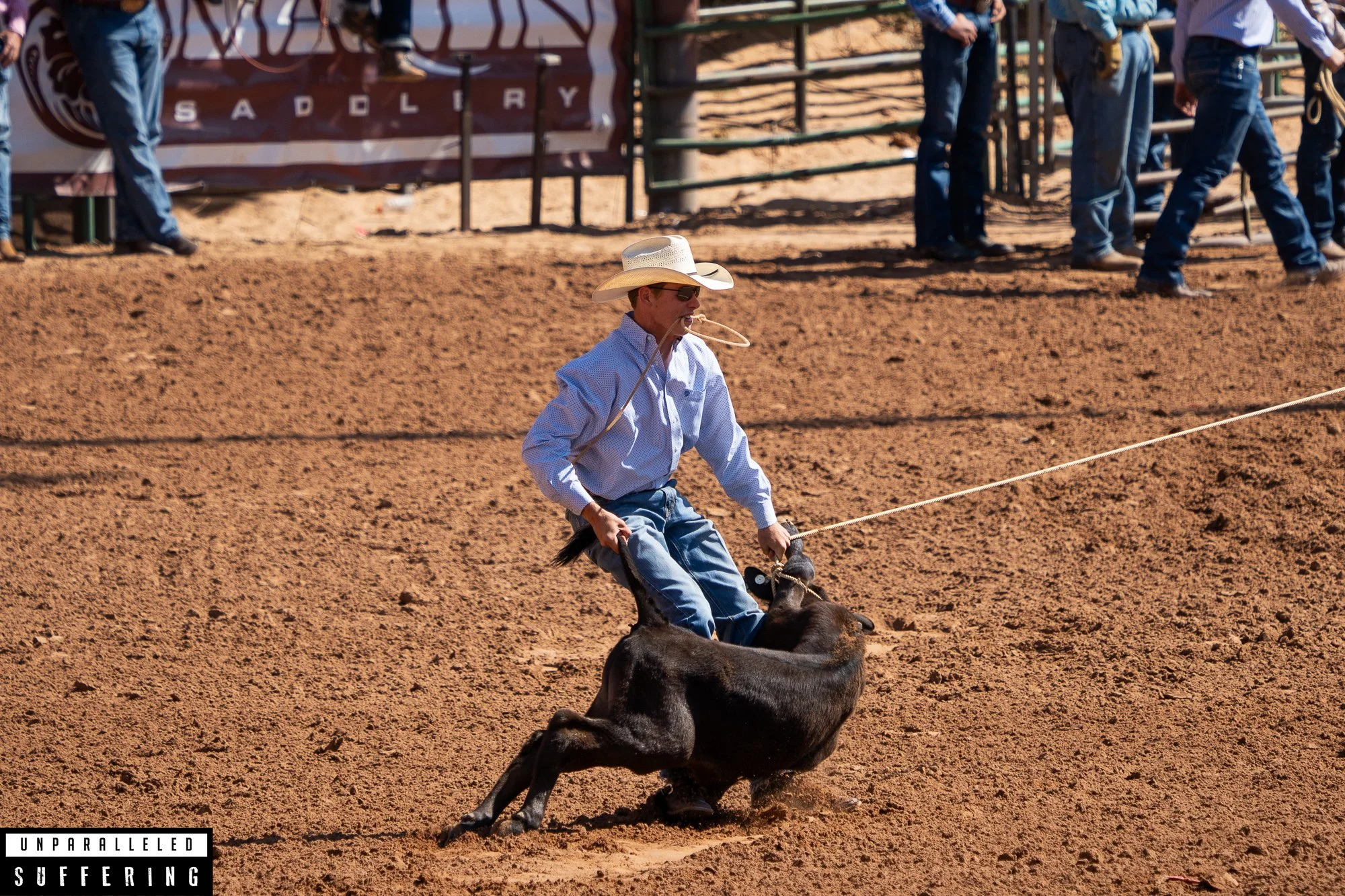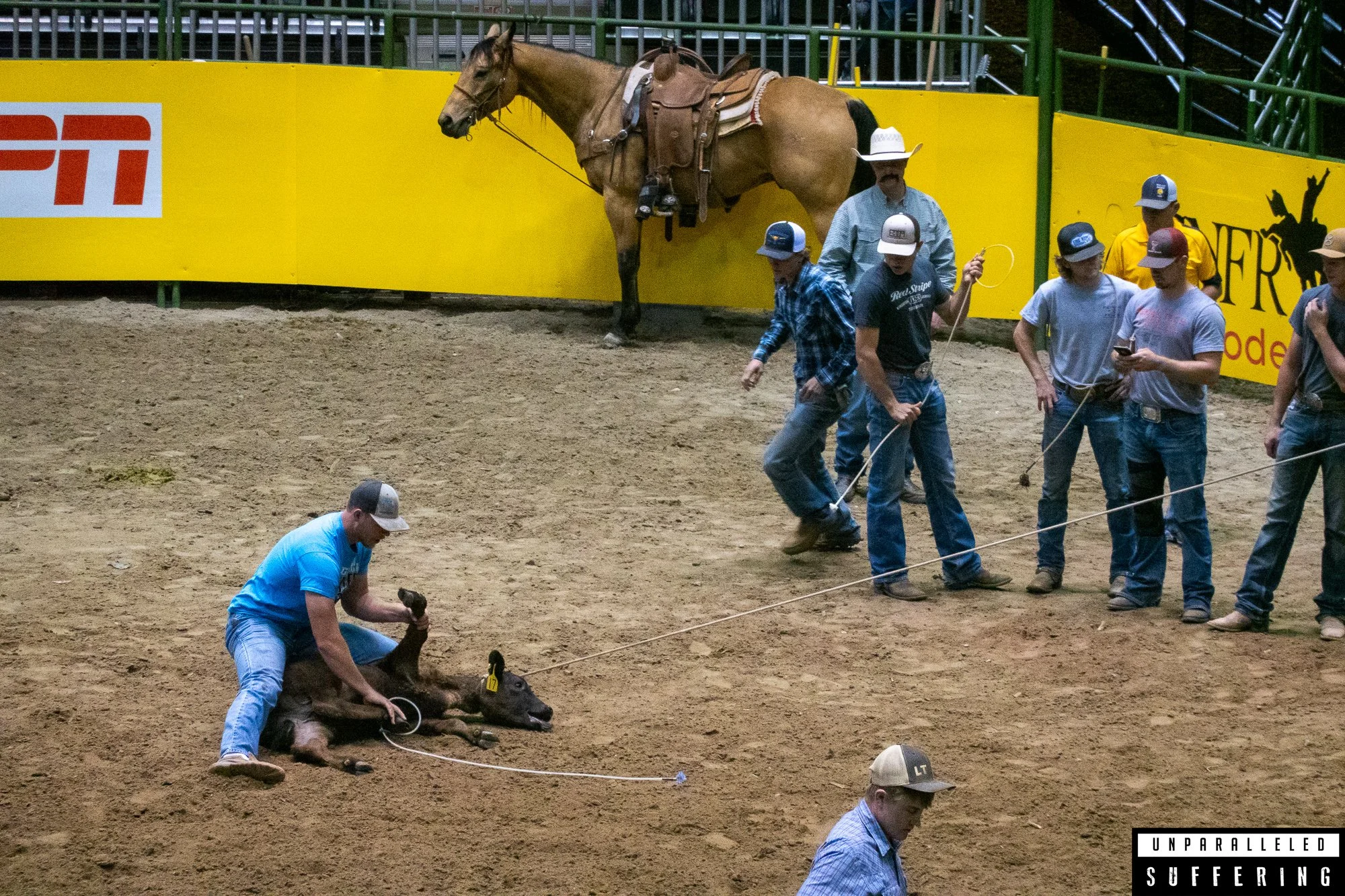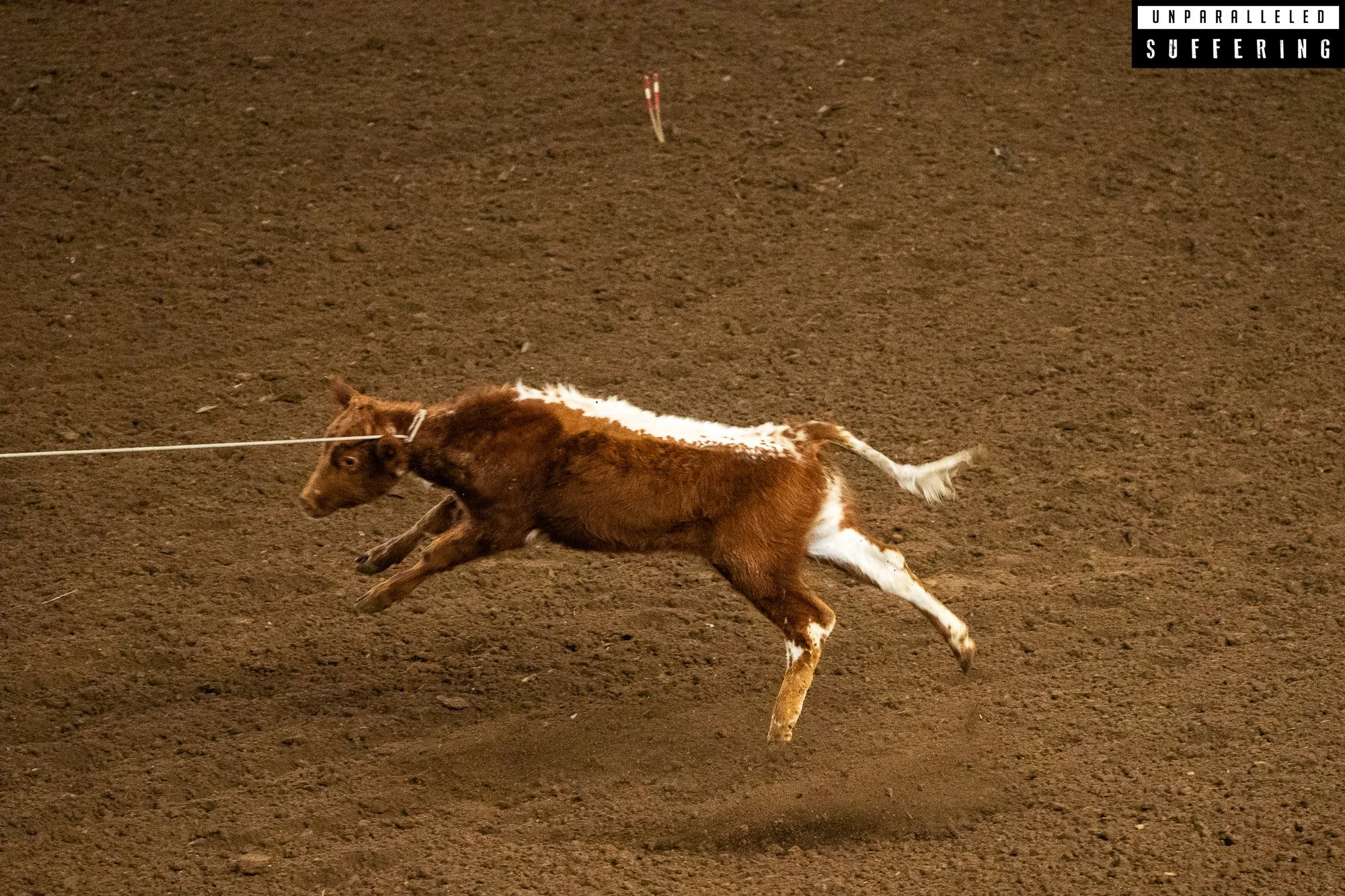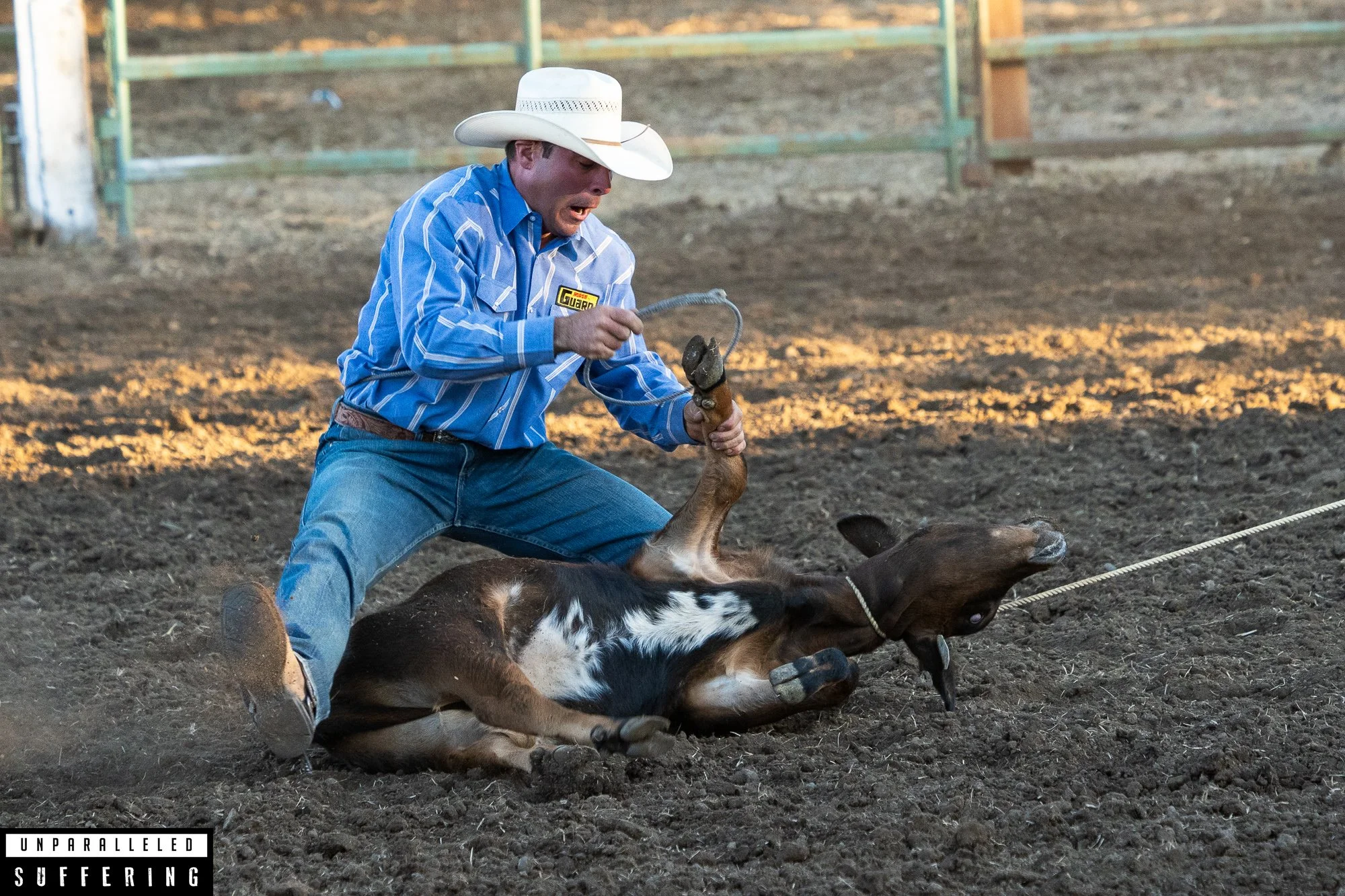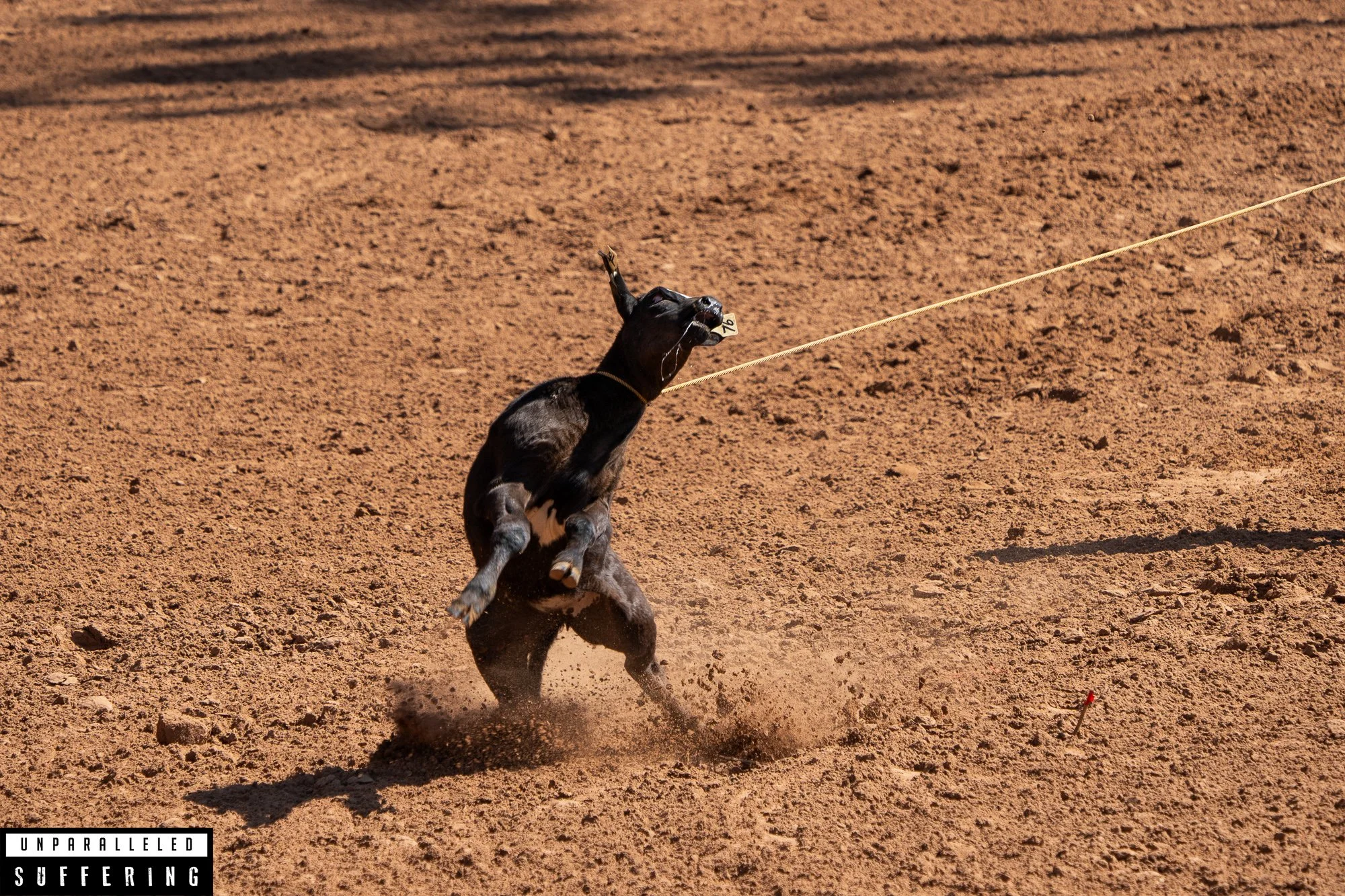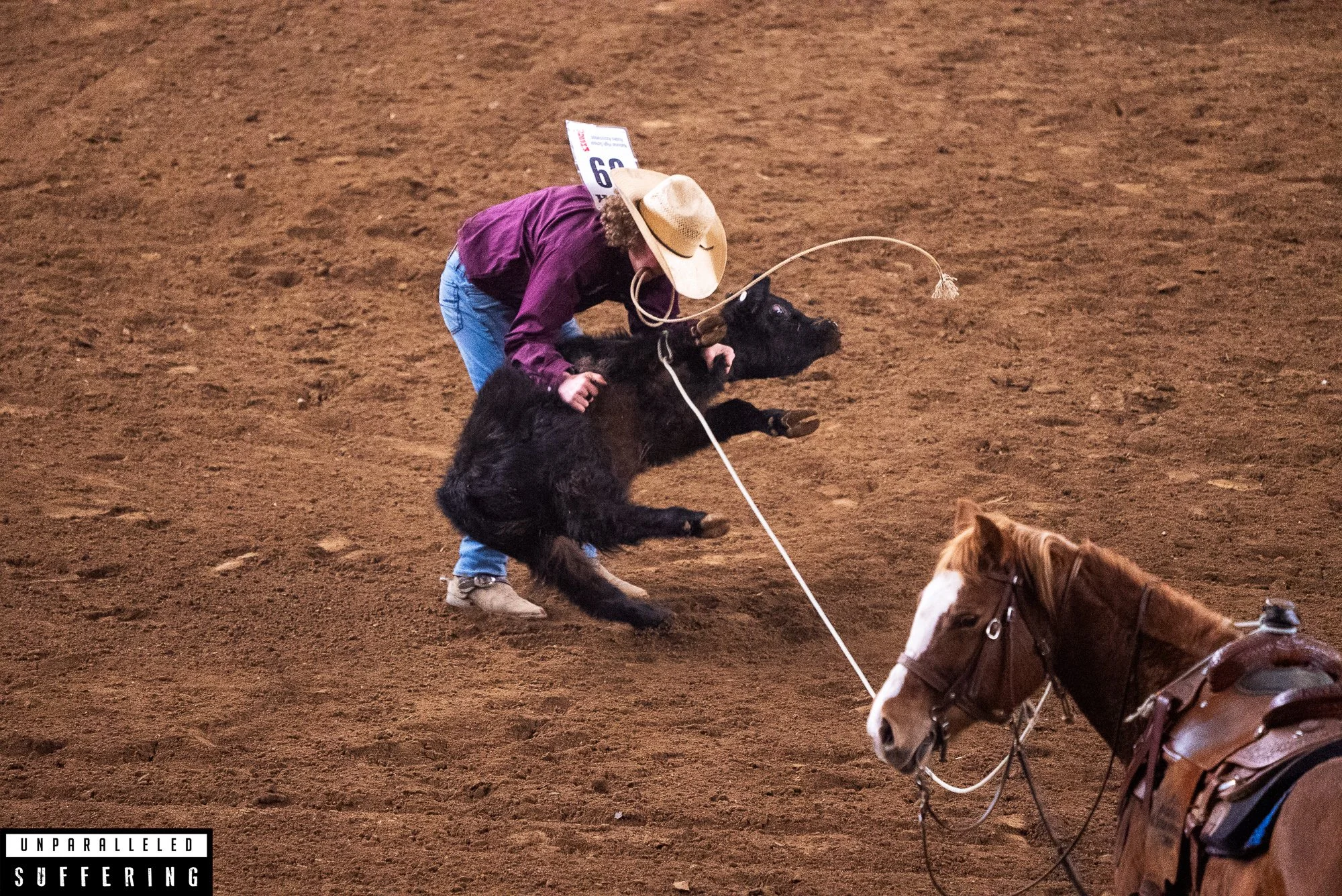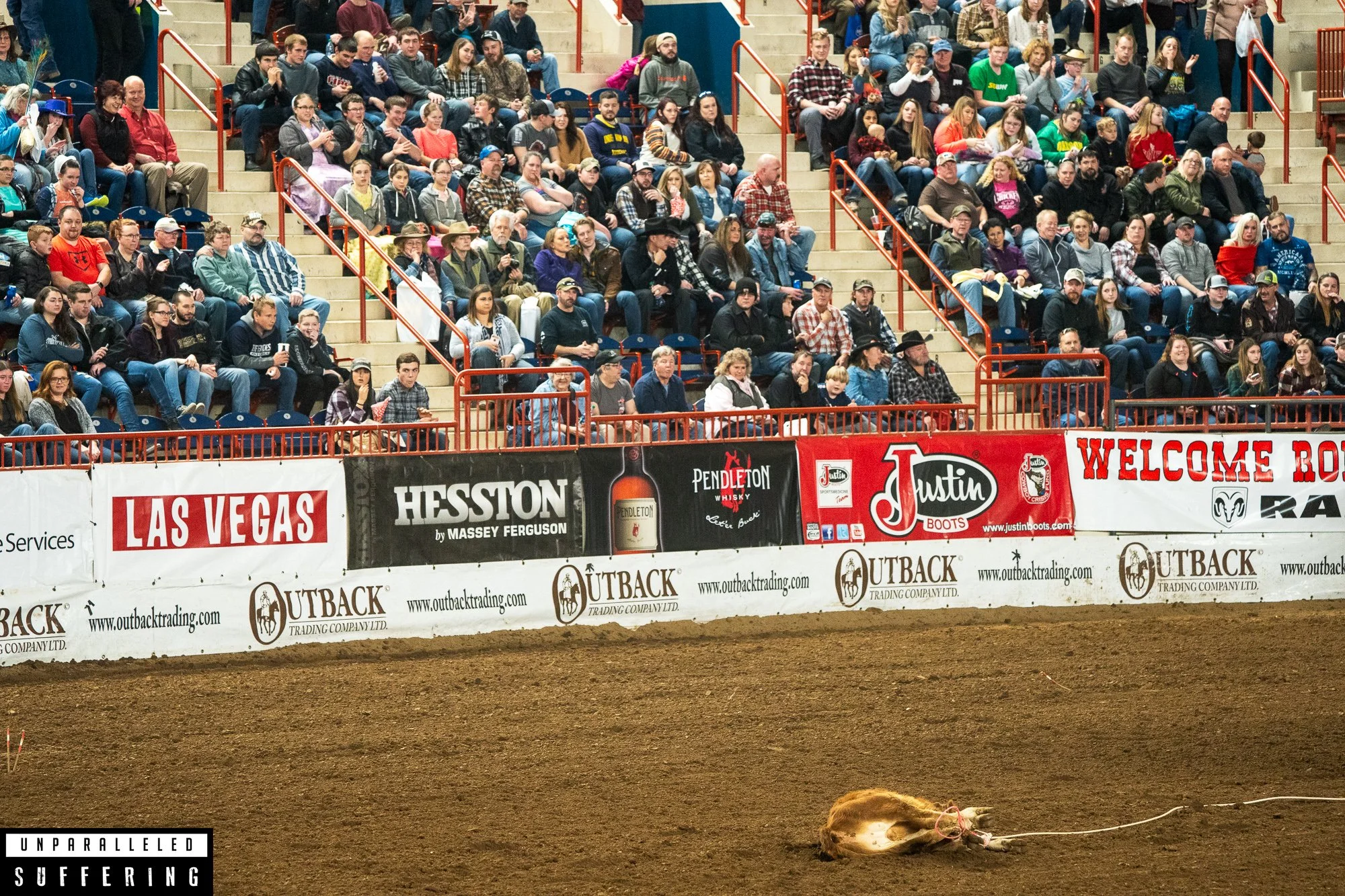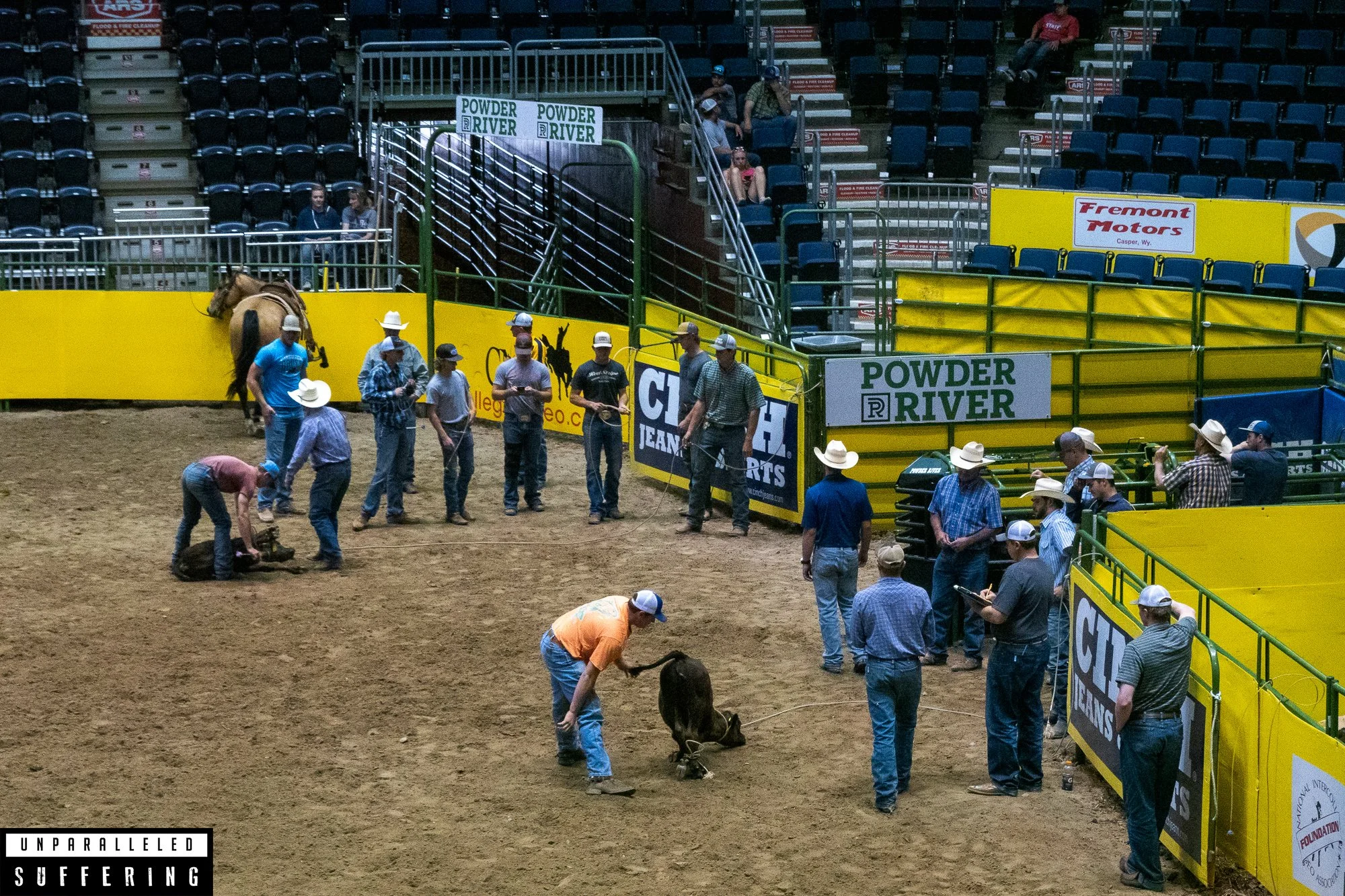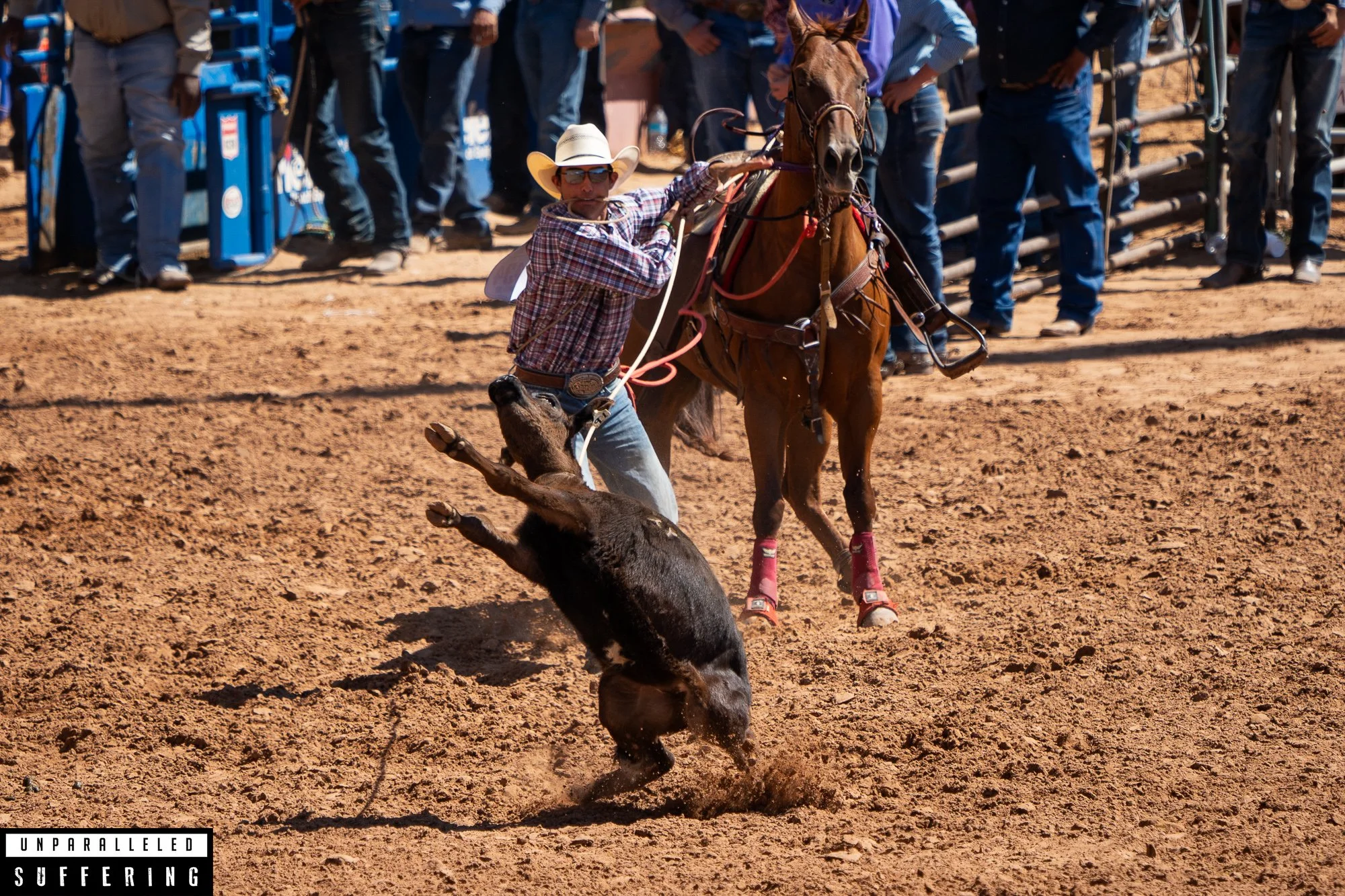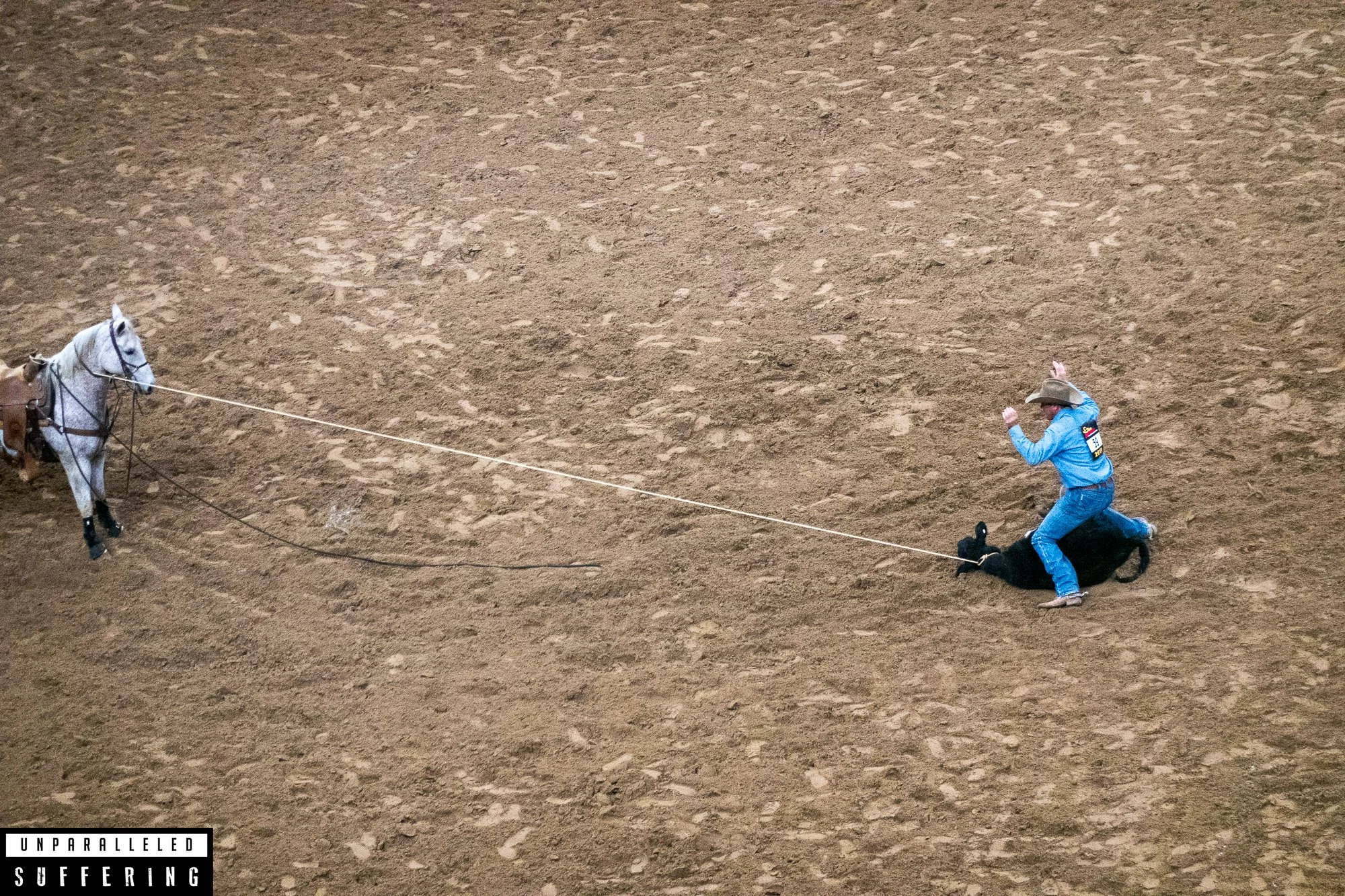Calf Roping
Terrrorizing Calves As A “Sport”
What is calf roping?
Calf roping, now called tie-down roping, is a timed rodeo event in which calves who have been separated from their mothers and are only approximately 3-4 months old are chased, lassoed, slammed, tied, and immobilized by a rodeo competitor. As with all other rodeo events, both the human and the other animal are referred to as athletes despite the fact that the animals used in rodeos are simply reacting to pain, fear, and control.
A calf is made to go into a holding chute while the competitor sits mounted on a horse nearby in a three-sided fenced area with an opening in front of him. While in the chute the calves are typically agitated via different techniques such as electric shocking, tail twisting and bending, poking, pushing, and smacking. When the chute opens the distressed calf runs out in full force. The competitor chases the calf on horseback and throws a lasso over their neck, bringing the calf to a sudden halt and pulling them back abruptly—sometimes jolting their body into the air and down onto the hard ground. The contestant’s trained horse is supposed to come to a full stop after the loop encircles the calf's neck to keep the calf from being able to evade the contestant. Sometimes calves are mis-roped and the rope catches them and yanks them back by their legs or head.
The competitor dismounts from the horse, runs towards the calf, lifts them up by their skin, which is called flanking, and throws them down sideways onto the ground. He grabs three of their legs together and ties them up with a pigging string and a knot. During the catching, tying, and immobilization the horse is supposed to pull back hard enough on the rope as to prevent any slack, but not so much that they drag the calf by the neck (although this does happen). When finished roping, the competitor throws his hands in the air to signal completion. He remounts his horse and rides forward to the calf to create slack in the rope. As long as the calf remains fully tied for six seconds the contestant will receive a time, but if the calf kicks free then the contestant receives no time.
Calves forced into this activity experience high levels of distress, fear, terror, and pain (even more during practice runs). Physical injuries can come in many forms, including damaged tracheas, soft tissue damage of the neck, choking from being yanked back and dragged, fractured ribs, severed spines, and bruising. Sometimes calves are killed during or after the competition. Since calves are prey species they may hide signs of pain to avoid predation and thus their masked pain may deceive someone into thinking the calves have a higher pain threshold than they really do.
The origins of calf roping are influenced by work on bovine ranches when animal exploiters would pursue calves and use lassos and roping to immobilize them to the ground so that they could easily perform procedures such as castration, dehorning, branding, or other medical procedures. A spin on this seemingly once “necessary” act began to be done to calves in organized events for competition and entertainment purposes.
